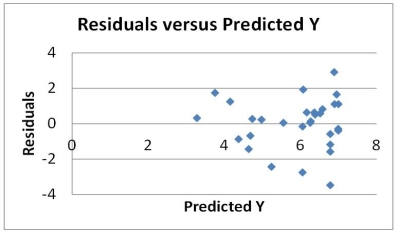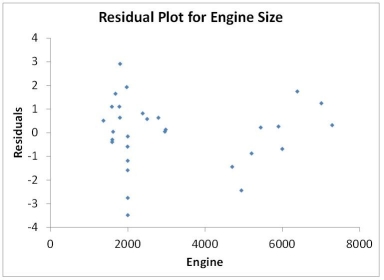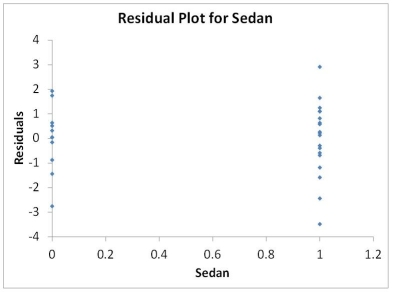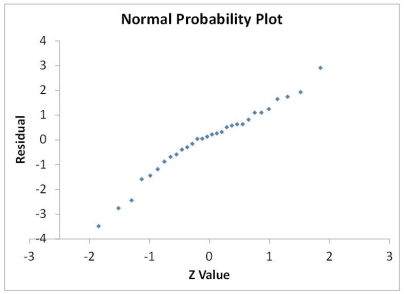TABLE 14-16
What are the factors that determine the acceleration time (in sec.)from 0 to 60 miles per hour of a car? Data on the following variables for 30 different vehicle models were collected:
Y (Accel Time): Acceleration time in sec.
X1 (Engine Size): c.c.
X2 (Sedan): 1 if the vehicle model is a sedan and 0 otherwise
The regression results using acceleration time as the dependent variable and the remaining variables as the independent variables are presented below.  The various residual plots are as shown below.
The various residual plots are as shown below. 


 The coefficient of partial determinations
The coefficient of partial determinations  and
and  are 0.3301,and 0.0594,respectively.
are 0.3301,and 0.0594,respectively.
The coefficient of determination for the regression model using each of the 2 independent variables as the dependent variable and the other independent variable as independent variables (  )are,respectively 0.0077,and 0.0077.
)are,respectively 0.0077,and 0.0077.
-True or False: Referring to Table 14-16,there is enough evidence to conclude that being a sedan or not makes a significant contribution to the regression model in the presence of the other independent variable at a 5% level of significance.
Definitions:
Strategy Formulation
The process of creating strategies to be implemented by an organization to achieve long-term goals.
Organizational Environment
The set of external and internal factors that influence an organization's operating situation, including regulatory, economic, social, and technological factors.
Product and Service Mix
The combination of products and services a company offers to meet the needs of its customers.
Facilities Locations
The process of deciding the geographical placement of operations, factories, or offices of a business.
Q18: True or False: The stepwise regression approach
Q32: Referring to Table 16-16,what is the Laspeyres
Q38: True or False: Referring to Table 14-17,we
Q43: Referring to Table 16-11,using the second-order model,the
Q63: Referring to Table 13-4,the total sum of
Q76: Referring to Table 16-14,to obtain a forecast
Q122: True or False: Referring to Table 13-12,there
Q124: Referring to Table 16-5,the number of arrivals
Q128: Referring to Table 14-1,for these data,what is
Q173: If the Durbin-Watson statistic has a value